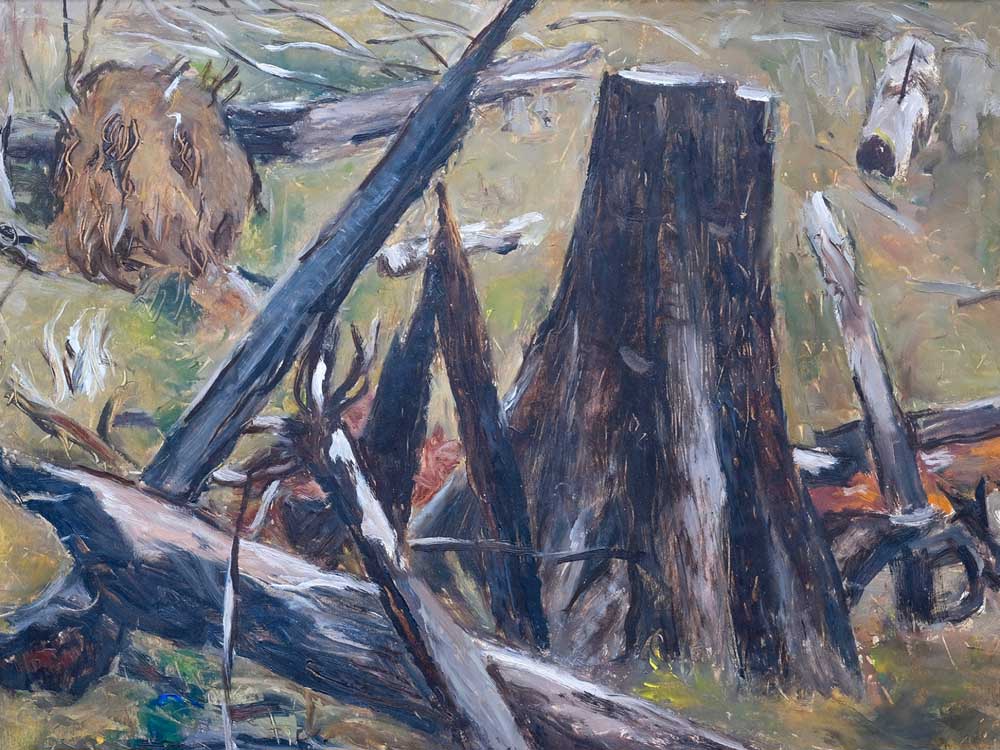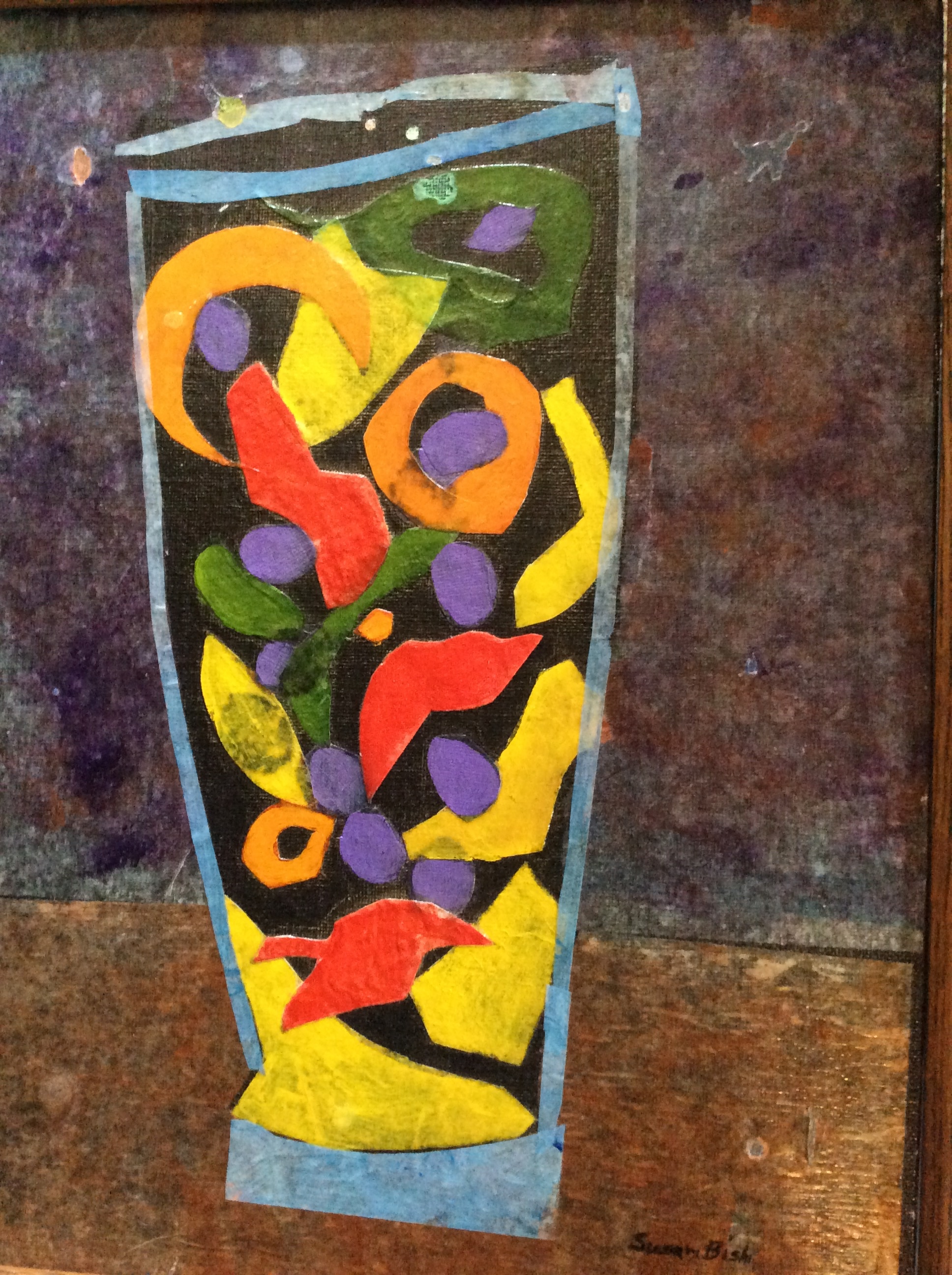Manzanita exhibit offers art by the Runquist brothers
Published 9:00 am Tuesday, May 28, 2024

- This untitled piece by Arthur Runquist from 1955 was given the name “Burnt Stump No. 2.”
From Aberdeen, Washington, to New York City to Portland and, eventually, the Oregon Coast, the Runquist brothers — Arthur and Albert — spent five decades creating a thought-provoking collection of artwork that demonstrates awareness about social inequality, the natural environment and power dynamics during transitional times.
Trending
“To be an artist, you have to look carefully. They really did do that,” said Bonnie Laing-Malcolmson, a retired Arlene and Harold Schnitzer Curator of Northwest Art from the Portland Art Museum.
A wide array of the Runquist brothers’ artwork — much of it borrowed from private collections — will be on display in an exhibition at the Hoffman Center for the Arts in Manzanita starting Thursday.
Some of the Runquists’ original sketches, and a few paintings, will also be for sale. An opening reception for the exhibit will take place from 3 to 5 p.m. Saturday, and the work will be on display through June 29.
Trending
Laing-Malcolmson, who is the curator of the Hoffman Center exhibition, will give two presentations in conjunction with the display: “Social Activism and Burnt Stumps: Two Brothers’ Living Art,” at 1 p.m. Sunday and “Social Realism and Government Funding: Works Projects Administration Art In and Beyond Oregon” at 1 p.m. on June 9.
Art as advocacy
Arthur and Albert Runquist, born in the 1890s, were the children of Scandinavian immigrant parents who settled in Aberdeen to farm and log.
The brothers took an early interest in art that led them to the University of Oregon, the Art Students League in New York, and the Portland Museum Art School (now the Pacific Northwest College of Art). In New York, in particular, “they were exposed to a lot of new artwork” and modern techniques coming from Europe, Laing-Malcolmson said.
After their studies, they found employment during the Depression as mural and easel painters with the Works Projects Administration. When that program ended, they began working at shipyards in Portland and Vancouver, Washington.
During this stage, there was a shift in the nature of their work. Although the Runquists captured the industrial forces being championed at the time, they were also sympathetic to the plight of workers in the shipyards and construction sites.
“They witnessed a lot of inequality amongst the way the workers were treated,” from being overworked and struggling in unsafe environments to lack of access to adequate health care, Laing-Malcolmson said, adding the Runquists created artwork that illustrated these observations.
“They showed images of workers being hurt and killed,” she said.
One of their best-known pieces, which will be on display at the Hoffman Center, depicts the bodies of two workers, missing limbs and fingers, discarded atop a pile of scrap metal.
The Runquists were deeply involved in workers’ rights and advocating for unionization. As a result, they were ostracized from Portland’s art scene, with many galleries and institutions refusing their work. However, one gallery owner in Portland, Louis Bunce, continued to offer them opportunities to display their art.
The brothers’ views and sympathies were also likely linked to a tragic incident in the early 1960s, when Arthur Runquist, the elder of the two, was severely beaten, resulting in his long-term hospitalization.
The motivation for the assault is unclear, based on readings, Laing-Malcolmson said, but some believe they were connected to anti-union individuals.
Finding solace
After the assault, the brothers relocated to the Oregon Coast in 1946. Henry Frederick Wentz, who had been the head of the painting department at the Portland Museum Art School and one of their professors while they were studying there, lent them his Neah-Kah-Nie beach cottage, where they lived for about 18 years.
On the North Coast, they found refuge and new inspiration, producing an expansive body of work, often with expressionistic views of the landscape, people and wildlife. Their work was conscious of logging and development, and the ramifications of the Tillamook Burn, a series of large forest fires between 1933 and 1951.
“The brothers made landscape paintings that showed the beauty of the Northwest but also showed burnt wood and twisted driftwood,” Laing-Malcolmson said, adding they thoughtfully observed the plight of the natural environment caused by logging and overfishing. “They realized it was a necessary way of life in the Northwest, but at the same time, they really made images that would cause one to think about what we were doing to the land and the landscape.”
The Runquists didn’t achieve significant fame or fortune on the coast, or in their lifetime. Several of their preliminary sketches are on lined paper, using charcoal, pen or ink, whatever they had available.
According to Laing-Malcolmson, they would venture into Nehalem, the more bustling community at the time, to sell their artwork when they needed money. But they lived in relative poverty.
In 1963, they left the coast and moved back to Portland, likely because of health problems, or because Wentz needed to use his cottage once more, Laing-Malcolmson theorized. Both brothers died in 1971, leaving behind five decades of artwork that reflects a transitional period in the United States.
“(It’s) historically important and it’s kind of grown in interest among collectors of historical work,” she said. “The Runquist brothers were visionaries in their own right … They made things every day, but they wanted to make things with meaning.”
Because most of the brothers’ art resides in private collections, the Hoffman Center exhibit provides a rare opportunity to view and purchase their work.
“This is a chance for people to see a really special show,” Laing-Malcolmson said.
Runquist Brothers Exhibition
Hoffman Center for the Arts, 594 Laneda Ave., Manzanita
On display through June 29, reception from 3 to 5 p.m. Saturday, presentations from curator Bonnie Laing-Malcolmson at 1 p.m. Sunday and June 9
www.hoffmanarts.org








